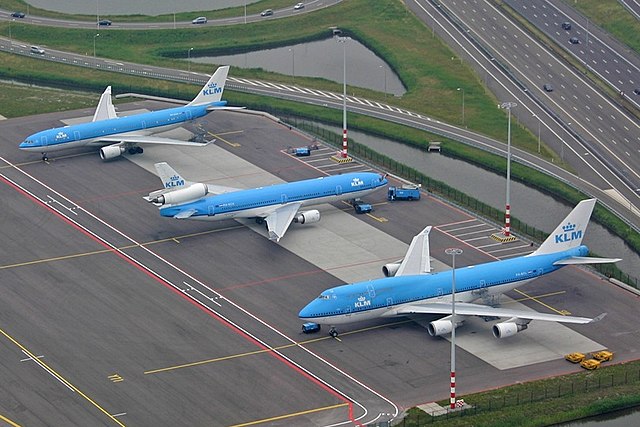The Ilyushin Il-86 is a short- to medium-range wide-body jet airliner that served as the USSR's first wide-bodied aircraft. Designed and tested by the Ilyushin design bureau in the 1970s, it was certified by the Soviet aircraft industry, manufactured and marketed by the USSR.
Ilyushin Il-86
Passenger cabin of an Il-86 showing the absence of overhead storage bins in the centre row. The Il-86's sister model (Ilyushin Il-96) also has no overhead storage bins in the center row.
An Il-86 at Pulkovo Airport, Saint Petersburg
An Aeroflot Il-86 at Shannon Airport in 1992.
A wide-body aircraft, also known as a twin-aisle aircraft and in the largest cases as a jumbo jet, is an airliner with a fuselage wide enough to accommodate two passenger aisles with seven or more seats abreast. The typical fuselage diameter is 5 to 6 m. In the typical wide-body economy cabin, passengers are seated seven to ten abreast, allowing a total capacity of 200 to 850 passengers. Seven-abreast aircraft typically seat 160 to 260 passengers, eight-abreast 250 to 380, nine- and ten-abreast 350 to 480. The largest wide-body aircraft are over 6 m (20 ft) wide, and can accommodate up to eleven passengers abreast in high-density configurations.
A narrow-body Boeing 737 of Lufthansa in front of a wide-body Boeing 777 of Emirates
A Boeing 747, the first wide-body passenger aircraft, operated by Pan Am, its launch customer
Three widebodies: KLM's Airbus A330 twinjet, McDonnell Douglas MD-11 trijet and Boeing 747-400 quadjet
An Airbus A300's cross-section, showing cargo, passenger, and overhead areas








